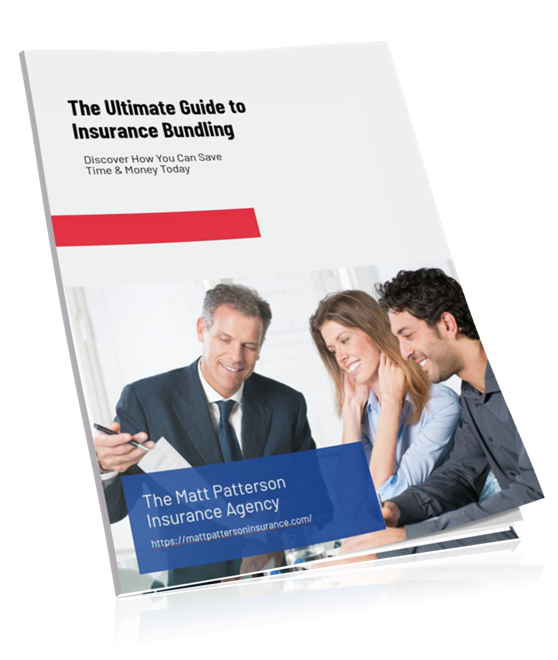Home insurance is an important consideration for new homeowners. It provides financial protection against unexpected events that can cause damage to your property or belongings. If you’re searching for Kyle home insurance, understanding how much it costs for new homes is essential in budgeting effectively.
Several factors influence home insurance costs, including:
- Location of the home
- Rebuilding costs
- Past claims history
- Coverage amounts
We’ll cover the average costs associated with home insurance quotes in Kyle TX. By examining these factors, you will gain valuable insights into what to expect when securing home insurance.
Understanding Home Insurance
Homeowners insurance, also known as property or hazard insurance, is a type of insurance that provides financial protection to property owners. Its main purpose is to cover losses and damages to a person’s home and personal belongings.
Types of Coverage Included
Homeowners insurance usually includes three main types of coverage:
- Structure: Protects the physical building from hazards such as fire, theft, and vandalism.
- Belongings: Covers personal property within the home, including furniture, electronics, and clothing.
- Liability: Provides protection against lawsuits for injury or damage caused by you or your family members on your property.
Homeowners vs. Renters Insurance
It’s important to understand the difference between homeowners and renters’ insurance. Homeowners insurance covers both the structure and personal belongings of the homeowner. On the other hand, renters’ insurance only protects personal belongings and provides liability coverage but does not cover the physical structure itself. This key distinction makes homeowners insurance generally more comprehensive and often more expensive than renters’ insurance.
This basic understanding helps new homeowners have a better idea of their insurance needs as they start this important investment journey.
Average Costs of Home Insurance for New Homes
The average cost of homeowners insurance in the United States is approximately $1,678 per year. This figure represents a comprehensive look at various policies and can serve as a benchmark for new homeowners.
Several factors influence this average:
- Location: Insurance costs can vary significantly based on regional risks. Areas prone to natural disasters such as floods, hurricanes, or wildfires often face higher premiums.
- Home Value: The value of your home plays a crucial role in determining your insurance cost. More expensive homes require higher coverage limits, leading to increased premiums.
For perspective, renters’ insurance typically costs much less, averaging around $180 per year. This stark difference arises because renters’ insurance covers personal belongings and liability but does not extend to the home structure itself.
Understanding these averages helps you gauge what to expect when shopping for policies. You can use this information to compare options effectively and make informed decisions regarding your new home insurance needs.
Factors Affecting Home Insurance Rates
Understanding the factors affecting home insurance rates is crucial for new homeowners. These elements directly influence the premiums you will pay, which can vary significantly based on several considerations. Here are the key factors that impact your home insurance rates:
Key Factors Impacting Premiums
- Location: Your home’s geographic location plays a significant role in determining your insurance costs. Areas prone to natural disasters such as hurricanes, floods, or earthquakes will generally see higher premiums. Additionally, neighborhoods with high crime rates may also lead to increased costs.
- House Rebuild Cost: The estimated cost to rebuild your home after a total loss deeply affects your premium. This figure considers your home’s size, construction materials, and local labor costs. It’s essential to accurately assess this to ensure you have sufficient coverage.
- Past Claims: Your claims history can impact your rates. If you’ve made multiple claims in the past, insurers may consider you a higher risk and charge higher premiums.
Role of Natural Disasters in Determining Rates
Natural disasters significantly influence home insurance costs. For instance:
- Homes situated in hurricane-prone areas often require additional coverage that can substantially increase premiums.
- Earthquake or flood insurance may be necessary depending on geographic risks, adding to overall costs.
Insurance companies assess regional data to determine how likely it is for a homeowner to file a claim due to disasters. Understanding these risks helps you anticipate potential rate increases based on your location.
Coverage Options Impacting Costs
Different types of coverage included in your policy will also affect the overall price:
- Dwelling Coverage: This protects the structure of your home and is often the most substantial part of your premium. Higher dwelling coverage typically leads to increased costs.
- Personal Property Coverage: This covers your belongings inside the house. The value of personal property influences premiums; if you have high-value items, consider having adequate coverage.
- Liability Coverage: Protects against lawsuits for injury or damage occurring on your property. Higher liability limits increase premiums but provide critical protection against potential legal costs.
Estimating Home Insurance Needs
To find out how much home insurance you need, accurate estimation is vital:
Assessing Home Value and Personal Belongings:
- Evaluate the current market value of your home.
- Create an inventory of your personal belongings, estimating their replacement costs.
Utilizing Tools for Precise Estimates:
- Leverage online tools like home insurance calculators. These calculators help determine necessary coverage amounts based on various factors like location and property value.
- Input specific data such as square footage, number of rooms, and safety features to get tailored estimates.
Tips to Lower Home Insurance Costs
Reducing your home insurance premiums doesn’t have to be complicated. Here are effective strategies and potential discounts you can leverage:
Strategies to Reduce Premiums
- Shop Around for Quotes: Comparing quotes from multiple insurers can reveal significant savings. Each company evaluates risk differently, leading to varied premiums.
- Bundle Policies: Consider combining your home insurance with auto or other policies. Many insurers offer discounts for bundled coverage.
Potential Discounts Available from Insurers
- Safety Features: Installing smoke detectors, security systems, and deadbolts can qualify you for discounts. Insurers value homes with enhanced safety measures.
- Claims-Free History: If you have a history of no claims, many insurers reward this with lower premiums.
- Loyalty Discounts: Staying with the same insurer for several years may provide loyalty benefits that reduce your costs.
By exploring these options, you can effectively learn how to save on home insurance. Understanding the various discounts on homeowners’ insurance will help ensure you pay a fair price while maintaining adequate coverage.
Finding the Right Balance Between Coverage and Cost for Your New Home’s Insurance Needs
Assessing your individual needs is crucial in selecting the right home insurance coverage. Consider the following factors:
- Home Value: Ensure your policy covers the complete rebuild cost of your home.
- Personal Belongings: Evaluate the total value of your possessions to determine adequate coverage levels.
- Liability Coverage: Choose a limit that aligns with your assets and potential risks.
By understanding these elements, you can strike an effective balance between necessary coverage and manageable costs. Factors such as location, home features, and personal circumstances play a vital role in determining the best options for your needs. To ensure you select the right options while staying within your budget, be sure to work with a reputable insurance agency in Kyle, such as Matt Patterson Insurance Agency.
Frequently Asked Questions About Home Insurance
What is homeowners insurance and why is it important for new homeowners?
Homeowners insurance, also known as property or hazard insurance, is a type of coverage that protects your home and belongings from various risks. It typically includes coverage for the structure of your home, personal belongings, and liability protection. For new homeowners, having this insurance is crucial as it safeguards their investment against potential damages and liabilities.
How much does home insurance cost for new homes on average?
The average annual premium for homeowners insurance in the United States is approximately $1,678. However, costs can vary significantly based on factors such as the location of the home, its value, and local risk factors.
What factors influence home insurance rates for new homes?
Several key factors affect home insurance rates including the geographical location of the home, the cost to rebuild the house, past claims history, and susceptibility to natural disasters. These elements play a significant role in determining your premium.
How can I estimate my home insurance needs accurately?
To estimate your home insurance needs accurately, assess the total value of your home and personal belongings. Utilizing tools like home insurance calculators can provide precise estimates based on your specific circumstances.
What strategies can I use to lower my home insurance costs?
To reduce your homeowner’s insurance premiums, consider shopping around for quotes from different insurers, bundling policies (like auto and home), and asking about available discounts. Many insurers offer discounts for various reasons such as having security systems or being claims-free.
How do I find the right balance between coverage and cost for my new home’s insurance?
Finding the right balance involves assessing your individual needs carefully while considering optimal coverage options that protect your investment without overspending. It’s essential to evaluate both the level of coverage required and how it aligns with your budget.







